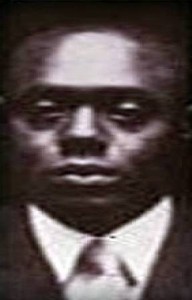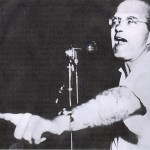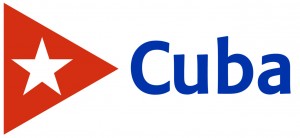Narrative of Redondo Roger Gonzalez, former head of intelligence of the Second Front of Escambray in the struggle against Fulgencio Batista.

Sandalio Junco, one of the first dissidents of the Comunist Party and Founder of Trotskysm is Cuba
“It was the month of May 1942 and was president Fulgencio Batista, a close friend of the Communists at that time. The union of workers in the bus transport company Golden Arrow, had its main offices and workshops in Sancti Spiritus. This union was controlled by the Communists of the PSP which then formed the government. Within hours of the night for several days of that month, it spread throughout the city, very brief pamphlets, bearing the signature of Union of the Golden Arrow That’s just propaganda saying “Junco Won’t Speak”, which constituted a clear threat of death.
On May 8, 1942 were met seven years of the death of Antonio Guiteras, exemplary revolutionary killed by Batista’s henchmen. Spiritus The revolutionaries wanted to pay tribute and he had announced that Reed would Sandalio keynote speaker of this act of remembrance.
The population was expectant, even Mr. Clerk, Mayor of Sancti Spiritus, a member of the Authentic Party, decided to reduce the risk that the meeting was given in the City Hall. The location was great, was on the second floor, had capacity for 200 people, although they were 700. Downstairs was the police station, commanded by Captain Ferrer Nodal, a native of Sagua la Grande.
A curious fact is that all attendees were men. For his part, Ferrer Nodal was ordered to register attendees, who were necessarily pass through the police station to take the stairs to the second floor. Suspiciously, the police recorded the Authentic Party members, but not to the Communists.
People at last filled the room, the stairs and onto the sidewalk, when it came the command of the Communist Party. Isidro Perez was in the lead, followed by Domingo Cordero, Armando Acosta, black Chacón, Catalino Monteagudo and two other men. The group was making its way homicidal. All gun had less Chacon, butcher knife concealed under his shirt. Moreover, since the Communist Party had placed three men were not known militants.
The mission of these three individuals was to serve as false witnesses, to protect the gunmen. Reached the second floor and stood at the local range. Chacon stayed beside Isidro, covering it so I could shoot more relaxed.
After talking Charles Simeon, they announced to Sandalio Junco, Armando Acosta called from a corner: Black traitorous lackey of imperialism! At the same time fired his gun at the ceiling and when the audience turned their heads back to see what happened, Isidro Perez took to shoot the socialist revolutionary Sandalio Junco.
Then there was a second shot, also led to the heart of agrarian leader wanted Spiritus, who was known by the nickname of El Chivo. Charles Simeon, stood before the microphone at the time that a third shot Isidro White did the same. The bullet was deflected as to the heart of Simeon. The rest of the command of murderers began shooting toward the ceiling and walls, while Chacón, knife in hand, moved toward the motionless body of sandals, to top it in case the firing of Isidro Perez had failed. But at that moment, when Chacon crouched with his dagger, gave a true militant with a chair with such force that he smashed his head causing instant death.
As had been announced pamphlets Junco could not utter a single word and the murderers fled quickly.
The building’s main entrance has a wall in its entirety, but there are a large back windows overlooking a tiled roof and going down and when it gets to the back street is very low, maybe a couple of meters. On the left there, amid the confusion, all members of the command murderer.
The three formed the group of legal protection, they kept on the premises and could serve as false witnesses.
The police had cordoned off Calle Independencia, where would that leave the audience. All present were arrested less than the murderers who escaped. More than 700 people made the paraffin test, which of course was negative. The next day Edward came to Sancti Spiritus Chivás and it was he who fired the Junco Sandalio duel on the street corner to Garaita Céspedes.
The day I killed Sandalio Junco and Jose Maria (The Goat), among the attendees were: Enrique Villegas Martinez, Jesus Caballero Gomez, Manuel Camejo, Bernardo Arias Castillo and Benitez Manuel Guillot. The latter became famous in Cuba, as in the early 30’s, an American warship entered the harbor of Havana and Guillot climbed the wall of the bay, with his 45 pistol and fired several shots into the battleship. Later he was Representative to the camera, the Authentic Party. The whole group that was present when they killed Sandalio Junco, was genuine and sympathetic Guiteras. Manuel Guillot and Manuel Camejo, founded the Justice Committee Sandalio Junco, read over the radio allusions Spiritus, wrote to the press, and even founded a newspaper, with the help of Enrique Villegas. This newspaper was distributed from the grammar school of Santi Spiritus.
Isidro Perez had been arrested in Havana after the coup of Fulgencio Batista, as were the days of McCarthyism and the Communists had lost influence with Batista. Washington and Moscow were already in the beginning of the Cold War. Obviously, the Americans responded to Batista and the Communists to Moscow, so the cool relations between the two centers of power, inevitably reflected within Cuba. Anyway, the men of teammate Jose Isidro Perez managed to move to this town jail where the prison system was softer. Joseph and his men, despite the international situation, did not lose their contacts within the power Batista.
Of course, during the presidency of Batista could not bring charges against anyone. In that year 1942, the Communists were part of the Batista government, but by 1944, things changed since Ramon Grau San Martin won the election. Then, the Authentic Party group who had witnessed the crime, could serve as a witness in court.
Moreover, the May 7, 1945, Enrique Villegas, Jesus Caballero Gomez and Bernardo Arias Castillo, were stationed in one place, where he would spend the night Sunday Lamb, one of the murderers of Sandalio Junco. The three could not bring much to be busy and lighting. Finally, Lamb who was tall and very thin, was unharmed despite being shot repeatedly. So, which formed much excitement and some parishioners recognized the attackers, but no one spoke.
Then, in a trial for the government of Grau, Isidro Perez was convicted. In 1944, Chiba came to Sancti Spiritus, to move the rest of Sandalio Junco for Havana. Today, unfortunately, neither history nor the tomb of sandals is known as the Cuban people. One of the most important twentieth-century Cuban revolutionary remains obscure. The Apostle of our Independence knew that kind of cruelty, which is to hide the liberators. Marti knew the nature of power, which wrote: Do not put me in the dark to die as a traitor … But the story does not condone cold maneuvering power. A Marti have tried to disappear into the black hole of lies and opportunism, but every day is more alive. Junco Sandalio also occupy the rightful place in our history.
The place where the communists killed Sandalio Junco, even today remains in excellent condition. In a marble plaque reads: Here was the police station of the Batista dictatorship, which was taken by the forces of Commander Armando Acosta Lamb on December 23, 1958.
Sources: FelixJoséHernández / RogerRedondo / InternetPhotos / TheCubanHistory.com
The Assassination of Sandalio Junco / The Cuban History / Arnoldo Varona, Editor
EL ASESINATO DE SANDALIO JUNCO, PADRE DEL TROTSKISMO CUBANO.
Narración de Roger Redondo González, ex-jefe de inteligencia en el Segundo Frente del Escambray en la lucha contra Fulgencio Batista.

Sandalio Junco, uno de los primeros disidentes del Partido Comunista y fundador del trotskismo en Cuba
“Corría el mes de mayo de 1942, y gobernaba el presidente Fulgencio Batista, muy amigo de los comunistas de aquella época. El sindicato de trabajadores de la empresa de transporte de ómnibus La Flecha De Oro, tenía sus oficinas y talleres principales, en Sancti Spiritus. Este sindicato estaba controlado por los comunistas del P.S.P. que entonces formaban parte del gobierno. En horas de la noche durante varios días de aquel mes, se regaron por la ciudad, panfletos muy escuetos, que llevaban la firma del sindicato de la La Flecha De Oro. Aquella propaganda sólo decía: JUNCO NO HABLARÁ, lo que constituía una clara amenaza de muerte.
El 8 de mayo de 1942 se cumplían 7 años de la muerte de Antonio Guiteras, revolucionario ejemplar asesinado por los esbirros de Batista. Los revolucionarios espirituanos le querían rendir homenaje y habían anunciado que Sandalio Junco sería el orador principal de aquel acto de recordación.
La población se encontraba a la expectativa, incluso el Sr. Escribano, alcalde de Sancti Spiritus, miembro del partido Auténtico, decidió, para reducir el riesgo, que el mitin se diera dentro del edificio del Ayuntamiento. El local era grande, quedaba en el segundo piso, tenía capacidad para 200 personas, aunque fueron unas 700. En la planta baja estaba la estación de policía, comandada por el capitán Ferrer Nodal, natural de Sagua la Grande.
Un dato curioso es que todos los asistentes eran hombres. Por su parte, Ferrer Nodal recibió la orden de registrar a los asistentes, quienes tenían que pasar necesariamente por la estación de policía para tomar la escalera y llegar al segundo piso. De manera sospechosa, la policía registraba a los miembros del partido Auténtico, pero no a los comunistas.
La gente, al fin, llenó el local, la escalera y hasta la acera, cuando llegó el comando del partido Comunista. Isidro Pérez iba a la cabeza, seguido por Domingo Cordero, Armando Acosta, el negro Chacón, Catalino Monteagudo y otros dos hombres. El grupo homicida se fue abriendo paso. Todos llevaban pistola, menos Chacón, que ocultaba un cuchillo de carnicería debajo de la camisa. Además, ya el partido Comunista había situado a tres hombres, que no eran conocidos como militantes.
La misión de estos tres individuos era la de servir de testigos falsos, para proteger a los pistoleros. Llegaron al segundo piso y se situaron en abanico por el local. Chacón se quedo al lado de Isidro, cubriéndolo para que pudiera disparar más tranquilo.
Después de hablar Charles Simeón, cuando anunciaron a Sandalio Junco, Armando Acosta gritó desde una esquina: ¡Negro traidor lacayo del imperialismo! Al mismo tiempo disparó al techo con su pistola y cuando los asistentes voltearon la cabeza hacia atrás para ver qué pasaba, Isidro Pérez aprovechó para disparar contra el revolucionario socialista Sandalio Junco.
Acto seguido hubo un segundo disparo, dirigido también al corazón del querido dirigente agrario espirituano, al que se conocía por el mote de El Chivo. Charles Simeón, estaba frente al micrófono en el momento que un tercer disparo de Isidro hizo blanco en el mismo. La bala se desvió ya que iba directo al corazón de Simeón. El resto del comando de asesinos, comenzó a disparar hacia el techo y las paredes, mientras Chacón, cuchillo en mano, avanzaba hacia el cuerpo inerte de Sandalio, para rematarlo por si acaso el disparo de Isidro Pérez hubiera fallado. Pero en aquel instante, cuando Chacón se agachó con su puñal, un militante auténtico le dio un silletazo con tanta fuerza, que le destrozó la cabeza provocándole una muerte instantánea.
Tal como lo habían anunciado los panfletos, Junco no pudo pronunciar ni una sola palabra y los asesinos huyeron rápidamente.
El edificio por la entrada principal presenta una pared en toda su extensión, pero hacia atrás hay unas grandes ventanas que dan a un techo de tejas que va descendiendo y ya cuando llega a la calle de atrás es muy bajo, quizás un par de metros. Por ahí salieron, en medio de la confusión, todos los miembros del comando asesino.
Los tres que formaban el grupo de protección legal, se mantuvieron en el local y pudieron servir de testigos falsos.
La policía había acordonado la calle Independencia, por donde tendría que salir el público asistente. Todos los presentes fueron arrestados menos los asesinos que lograron escapar. A más de 700 personas se le hizo la prueba de la parafina, que por supuesto dio negativa. Al día siguiente llegó Eduardo Chivás a Sancti Spíritus y fue él quien despidió el duelo de Sandalio Junco, en la calle Céspedes Esquina a Garaita.
El día que asesinaron a Sandalio Junco y a José María (El Chivo), entre los asistentes, se encontraban: Enrique Villegas Martínez, Jesús Caballero Gómez, Manuel Camejo, Bernardo Arias Castillo y Manuel Guillot Benítez. Éste último se hizo célebre en Cuba, pues en la década del 30, un acorazado americano entró a la bahía de La Habana y Guillot se subió al muro de la bahía, con su pistola 45 e hizo varios disparos hacia el acorazado. Más tarde fue Representante a la cámara, por el partido Auténtico. Todo este grupo que estuvo presente cuando asesinaron a Sandalio Junco, era auténtico y simpatizante de Guiteras. Manuel Guillot y Manuel Camejo, fundaron el Comité Justicia para Sandalio Junco, leían alusiones por la radio espirituana, escribían a la prensa, y hasta fundaron un periódico, con la ayuda de Enrique Villegas. Ese periódico se repartía desde el Instituto de segunda enseñanza de Santi Spiritus.
Isidro Pérez había estado preso en La Habana después del golpe de Estado de Fulgencio Batista, pues eran los tiempos del Macarthismo y los comunistas habían perdido influencia con Batista. Washington y Moscú ya estaban en los comienzos de la Guerra Fría. Obviamente, Batista respondía a los americanos y los comunistas a Moscú, por lo que al enfriarse las relaciones entre estos dos centros de poder, se reflejaba inevitablemente al interior de Cuba. De todas maneras, los hombres del compañero José lograron trasladar a Isidro Pérez para esta cárcel municipal, donde el sistema carcelario era más blando. José y sus hombres, a pesar de la situación internacional, no perdieron sus contactos dentro del poder batistiano.
Por supuesto, durante la presidencia de Batista no se pudo formular cargos contra nadie. En aquel año 1942, los comunistas formaban parte del Gobierno de Batista, pero para 1944, las cosas cambiaron ya que Ramón Grau San Martín ganó las elecciones. Entonces, el grupo del partido Auténtico que había presenciado el crimen, podía servir de testigo ante un tribunal.
Por otra parte, el 7 de mayo de 1945, Enrique Villegas, Jesús Caballero Gómez y Bernardo Arias Castillo, se apostaron en un lugar, por donde pasaría esa noche Domingo Cordero, uno de los asesinos de Sandalio Junco. Los tres no se podían acercar mucho por haber mucha gente e iluminación. Finalmente, Cordero que era alto y muy flaco, salió ileso, a pesar de que le dispararon repetidas veces. De modo, que se formó mucha algarabía y algunos parroquianos reconocieron a los atacantes, pero nadie habló.
Posteriormente, en un juicio durante el gobierno de Grau, Isidro Pérez fue condenado. En 1944, Chibás fue a Sancti Spiritus, para trasladar los resto de Sandalio Junco para la Habana. Hoy, lamentablemente, ni la historia ni la tumba de Sandalio es conocida por el pueblo cubano. Uno de los más importantes revolucionarios del siglo XX cubano permanece en la oscuridad. El Apóstol de nuestra Independencia conocía ese tipo de crueldad, que consiste en ocultar a los libertadores. Martí conocía la naturaleza del poder, por lo cual escribió: No me pongan en lo oscuro a morir como un traidor… Pero la historia no perdona las maniobras frías del poder. A Martí lo han tratado de desaparecer en el agujero negro de la mentira y el oportunismo, pero cada día está más vivo. Sandalio Junco, también, ocupará el lugar que le corresponde en nuestra historia.
El local en donde los comunistas asesinaron a Sandalio Junco, aún hoy día se mantiene en magníficas condiciones. En una placa de mármol se puede leer: Aquí estuvo la estación de policía de la dictadura de Batista, que fue tomada por las fuerzas del comandante Armando Acosta Cordero el 23 de diciembre de 1958.
Sources: FelixJoséHernández/RogerRedondo/InternetPhotos/TheCubanHistory.com
El Asesinato de Sandalio Junco/ The Cuban History/ Arnoldo Varona, Editor



 Murder of Sandalio Junco, Father of Trotskyism In Cuba
Murder of Sandalio Junco, Father of Trotskyism In Cuba


